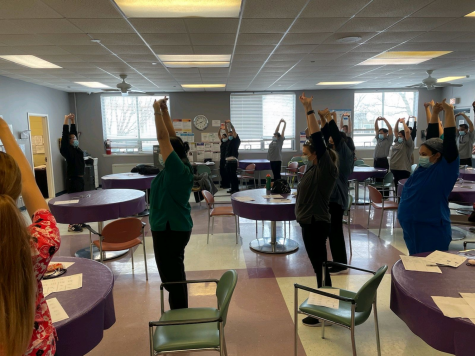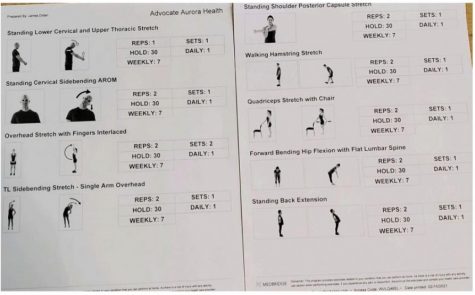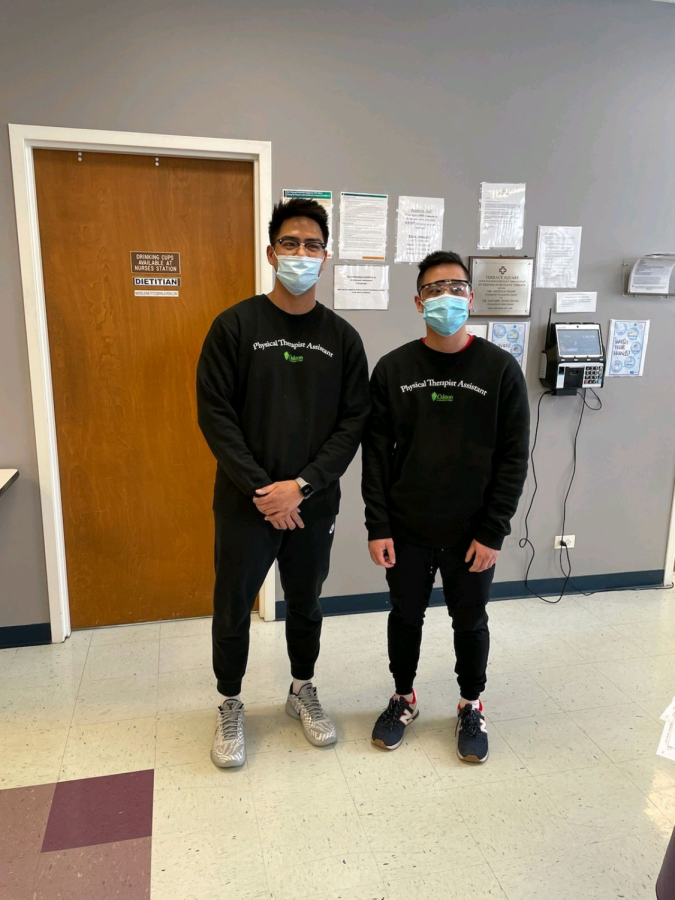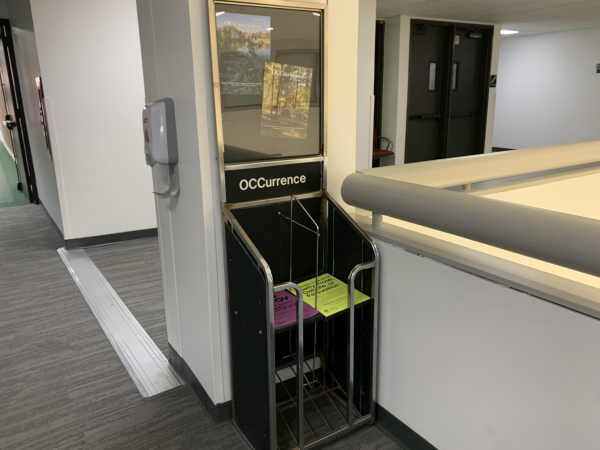Students educate nursing home staff on stretching
May 5, 2021
STRETCHING. WHY YOU SHOULD DO IT
Patrick Butiong and Louie Laya (Physical Therapy Assistants) share their in-service on stretching to the general public as part of our service learning project.
Almost everyone has a general idea about stretching. We all know it’s good for us but the reasons why are somewhat misguided and taught incorrectly.
I would like to share our knowledge about stretching and how we applied it to the neighboring community. We were given the task to perform an in-service on stretching to the general public as part of our service learning project.
We thought it would be a great idea to perform this task at Bella Terra Nursing Home in Morton Grove to spread awareness, educate the staff on the benefits of stretching, and teach how to implement stretching throughout the day.
The service-learning project talked about giving back to the community and we thought if there is anybody who deserves that, it would be healthcare workers.
This pandemic has truly been a challenge to all of us who work in the health care setting. We have experienced loss of our dear patients, friends, and our own loved ones. We faced uncertainty about our own future but we all still managed to come in to work and take care of our community despite this threat.
This in-service gave us the opportunity to teach what we have learned during our time in the PTA program as well as give back to the community. We were aware that much of the staff had not stretched in years or have not been taught how to stretch properly, so giving a simple yet effective stretching program that could be done at any point throughout the day would be beneficial for their health, well-being, and prevent work related injuries.

So why should we stretch?
The answer may seem simple to some but there are many factors that come into play. Some common reasons we should stretch are to enhance flexibility of our muscles/tissues, decrease pain, decrease risk of injury, enhance mobility, and improve posture. When we want to help someone who is experiencing pain, what we have to realize is that our body is one kinetic chain.
Everything from your feet can have effects all the way up to your back and vice versa. Think of it like a train on a railroad track. If the train is being pulled off the tracks, it will affect the way the whole segment moves. If things are not in optimal alignment, it will affect the biomechanics of how we move throughout the day.
Similarly, if our body is not in proper alignment during movement, it can cause excess load to be placed on other joints and tissues. Doing this repeatedly throughout the day can lead to microtrauma and eventual macrotrauma to our tissues by coming out as pain or injuries.
One common example of this is for individuals who have a desk job. If you sit at a desk all day with poor posture, we tend to develop muscle imbalances where the muscles on the frontside of our body tend to get tight (chest) and the muscles on the back (rotator cuff and scapular muscles), which are responsible for keeping the shoulder in proper alignment, become stretched and weak.
Eventually, this will affect the way our shoulder moves when we reach overhead, and since it is not in optimal alignment, other tissues and joints are forced to take the load leading to ailments such as shoulder impingement or bursitis.
Posture is something we emphasize greatly in therapy and we believe stretching is one factor that can not only enhance one’s posture but also correct muscle imbalances and thus alleviate pain if done correctly.
What is the correct way to stretch?

We want to make sure that when we stretch a muscle, we do so with the correct mindset. The notion of “No pain, No gain” is the mentality some have with stretching which can actually cause more harm than good. The main purpose of stretching is to allow the muscle to relax so that it can lengthen and become more flexible.
This will help keep your tissues and joints in proper alignment without pulling on other tissues while at the same time reducing risk of injuries. When performing a stretch, pushing a muscle past its capacity very quickly is more likely to cause damage to a muscle/tissue and possibly tear the muscle fibers.
Stretching to the point of pain actually causes that muscle to contract and does not allow the muscle to relax or lengthen, thus defeating the whole purpose of performing the stretch in the first place. If you are stretching and it feels as if the pressure keeps building up to the point of pain, you know you have gone too far.
The stretch should be comfortable enough to hold for 30 seconds for 3 repetitions and you should be able to ease into it. Over time, you should be able to gain more range of motion with that stretch if performed correctly.
There are so many benefits to stretching for every age group. Whether you are an athlete, avid gym goer, dealing with aches or pains, or just a person who works a normal 9-5, we can all enhance our ability to move throughout the day.
Even if you perform them every other day, your tissues will thank you for it. Like with anything in life, the more we do it the better we will get at it and you’ll notice how restricted you were from when you first started.
This pandemic has definitely shed light on what things in life we should not take for granted and I believe our physical health is definitely a big part of that. We need to take care of our bodies so that we can live pain free and move the way our bodies are intended to.
Below are a set of stretches we demonstrated to the staff at Bella Terra that can be performed multiple times per day and can help relieve some common ailments all of us may have had at some point.










